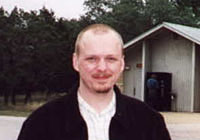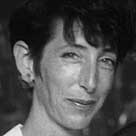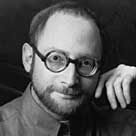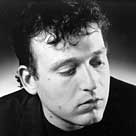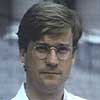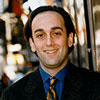|
New music has always had a tough time finding a home to call its own. Faced with a lack of performances by mainstream classical performing groups, as we learned here last month, many composers and other devotees of the avant-garde took it upon themselves to found their own ensembles to promulgate their own music and that of their peers.
Small wonder, then, that the same should hold true in the world of new music on records. Faced with balancing the budgets in an ever more demanding marketplace, major labels have historically stayed far away from the new, instead offering up recording after recording of the tried and true warhorses that have been presented since the dawn of the recording industry. As in the example of the live performance arena, where the most popular and least challenging music is programmed to keep the subscribers placated and happy, the recording industry has frequently chosen the path of least resistance, recording popular classics that moved records off shelves in stores and into homes.
It’s a flawed model, to be sure, and in recent years the classical recording industry has felt an upheaval as the tried and true has begun to fail. Suddenly one more recording of The Four Seasons or the Beethoven Fifth Symphony is not moving the numbers of units demanded by the corporate owners of the major labels. Small wonder that the classical recording industry is in a crisis of sorts. And, from time to time, new music is briefly seen as a possible alternative at the majors. A label such as Catalyst or Point Music will spin off from a major such as RCA or Philips, enjoy a brief period of vogue, and then fade away into insignificance or even obsolescence, when new music, despite a few flash-in-the-pan success stories (such as Henryk Gorecki’s Symphony No. 3 on Nonesuch), is revealed not to be the key to garnering a larger market share for classical music.
It’s a hard, unpleasant and unpopular pill to swallow: new music generally does not sell in major label figures, and it is the rare major label (Columbia Masterworks under Goddard Lieberson, Nonesuch under Teresa Stearne) that is actually prepared to deal with avant-garde music in a knowledgeable and thoughtful manner. But it would seem to be a matter of simple logic… it always takes time for a vanguard artform to earn the appreciation of a larger audience. The dilemma in which new music finds itself, then, is how to viably record contemporary works for posterity and for the small but enthusiastic audience that exists here and now.
Enter the indies. With lower overhead and not beholden to unsympathetic corporate owners, the independent record label is the natural home for new music. What’s more, virtually every independant label in the business of recording contemporary music has come into the business for one reason only: the founder or founders of the label sincerely appreciate and love new music, and want to play a role in its promotion and ultimately its success.
That said, although there are perhaps notable commonalities, no two labels share exactly the same story. Many of them are founded by composers and performers themselves, including Bridge, Capstone, Avant and Tzadik, innova, North/South and even the venerable CRI. Others, like Lovely Music and Monroe Street, were formed by people who are very closely connected to a whole group of experimental composers and performers. In a few cases, such as that of O.O. Discs, the products of the label are seen not merely as adjuncts to live performances but as new artforms in and of themselves. Some labels, such as New Albion, Mode and Organ of Corti, were founded by new music enthusiasts previously not directly involved in the recording industry. In the case of New World Records, what started out as an overly enthusiastic one-time series of 100 albums turned into an ongoing enterprise now in its third decade. Some labels, on the other hand, like Einstein, Pogus and Starkland, release so few recordings that their very existence runs counter to the machinations of the record business. Still others, such as Albany Records, Newport and Koch International Classics, include new music as just one facet among its many activities.
But ultimately, what unites all of the labels profiled in this issue of NewMusicBox, as well as the countless others not included here for reasons of space and time, is that for every one of them, the presentation of new music on record is a labor of love that more than repays the difficulties and hardships entailed in doing so.


